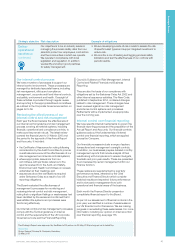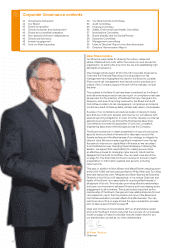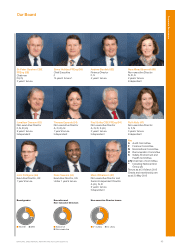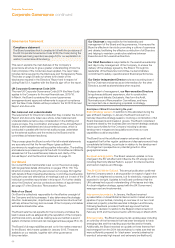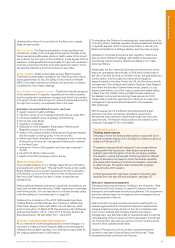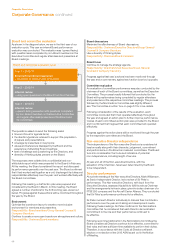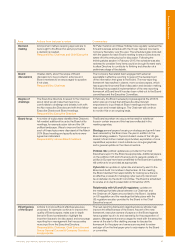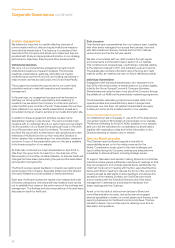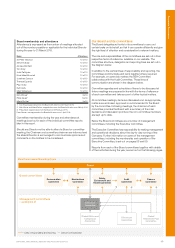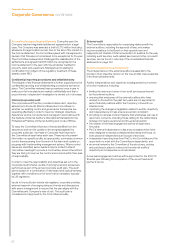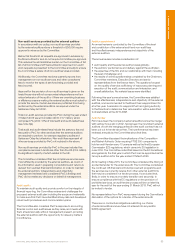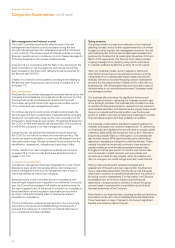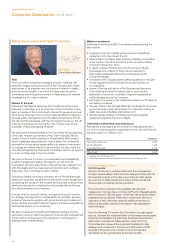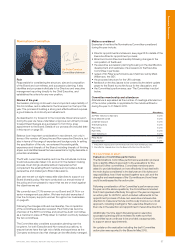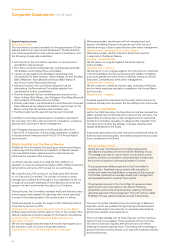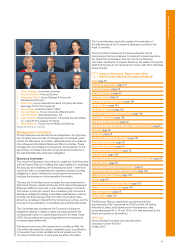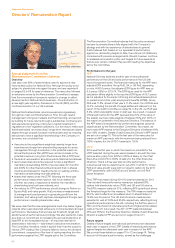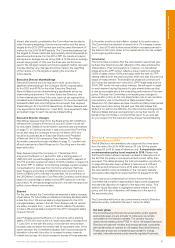National Grid 2015 Annual Report Download - page 53
Download and view the complete annual report
Please find page 53 of the 2015 National Grid annual report below. You can navigate through the pages in the report by either clicking on the pages listed below, or by using the keyword search tool below to find specific information within the annual report.
Summarised below are the issues which attracted the most focus,
and time, of the Committee in relation to the financial statements
during the year.
US nancial controls. The Committee has continued to devote a
significant amount of time challenging management on the action
they are taking to continue to improve the US finance control
environment. There has been continued focus on embedding the
enterprise resource planning system in the US and the benefits this
system now brings. The Committee has received regular updates
from management on progress against the measures taken to
remediate US financial control deficiencies.
In October, a new US CFO was appointed to lead the US finance
team. She initiated a granular review of the US finance function to
understand the current service levels and key learnings from prior
initiatives, including the successes as well as initiatives that did not
fully achieve their goals.
The outputs from this review were incorporated into a new US
finance function initiative which is intended to address the root
cause of issues identified by the review and simplify and
standardise processes.
In January 2015, the Committee received a presentation on the
initiative to understand the approach being taken, the stages
involved and the underlying issues that the initiative was aiming
toresolve. Management sought input and feedback from the
Committee on the direction, focus and timing of the proposed
initiative. The Committee discussed the proposal and asked
questions about the initiative before approving the approach.
Regular updates will be provided to the Committee through
theyear so that progress can be monitored.
During the year, the Committee challenged management in
theUSon its regulatory filing obligations, noting that due to the
system implementation issues, not all filings were made on time.
Management presented and, during the course of the year,
delivered on a detailed plan to complete the filings and remediate
the process. All regulatory filings are now up to date and
management communicated with the regulators throughout
theprocess.
Presentation of exceptional items. At the half year and year end,
the Committee examined an analysis of items to be classified as
exceptional to make sure the items did not include income or costs
relating to the underlying business performance.
In particular, the Committee considered the treatment of the liability
management programme costs at the year end. Management
proposed that the costs associated with the debt redemptions
should be treated as exceptional as they were one-off, significant
and outside the ordinary course of business. To include this cost
inunderlying finance costs would otherwise distort users’
understanding of the business performance. This proposal was
inline with the exceptional items accounting policy in the Annual
Report and Accounts and the historical treatment of debt
redemption costs.
The Committee agreed that the classification of this item was
appropriate. See note 4 footnote 8 on page 104.
Committee membership and attendance table
Attendance is expressed as the number of meetings attended
outof the number possible or applicable for the individual Director
during the year to 31 March 2015. Biographical details and
experience of Committee members are set out on pages 178
and179.
Name Attendance
Mark Williamson (chairman) 8 of 8
Paul Golby11 of 1
Ruth Kelly 8 of 8
Philip Aiken27 of 7
Maria Richter34 of 4
1. Paul Golby joined the Committee on 25 February 2015.
2. Philip Aiken stepped down from the Board with effect from 25 February 2015.
3. Maria Richter stepped down from the Board with effect from 28 July 2014.
Therese Esperdy was appointed to the Committee with effect from 22 April 2015.
Experience
The Board has determined that Mark:
• has recent and relevant financial experience;
• is a suitably qualified audit committee financial expert within
themeaning of the SEC requirements; and
• is independent within the meaning of the New York Stock
Exchange listing rules.
Financial reporting
The Committee monitors the integrity of the Company’s financial
information and other formal documents relating to its financial
performance and makes appropriate recommendations to the
Board before publication.
An important factor in the integrity of financial statements is making
sure that suitable and compliant accounting policies are adopted
and applied consistently on a year-on-year basis and across the
Company. In this respect, the Committee also considers the
estimates and judgements made by management when
accounting for non-standard transactions, including the treatment
of exceptional items. Two examples of these are set out below.
These considerations are supported by input from other assurance
providers such as the group controls, risk management and ethics
and compliance teams, the business separation compliance
officer, internal (corporate) audit and the SEH Committee, as well
asour external auditors. In addition, the Committee also considers
reports of the Disclosure Committee. See page 59 for more
information on the role of the Disclosure Committee.
The Committee reviews and approves the external audit plan
annually (see page 53) and, as part of this, considers thesignificant
risks upon which the external auditors will focus their audit. The
independent auditors’ report (pages 79 to 84) highlights areas of
focus, including some of the issues that theCommittee discussed
during the year.
Other risks, including the accuracy and valuation of treasury
derivative transactions, accounting for pension obligations,
accuracy of capital expenditure, revenue recognition and valuation
of environmental provisions were not considered in detail by the
Committee during the year as nothing significant arose that
warranted Committee attention.
Corporate Governance
NATIONAL GRID ANNUAL REPORT AND ACCOUNTS 2014/15 51


